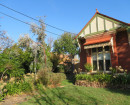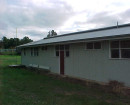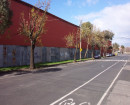Werribee Satellite Aerodrome
Cnr Princes Highway & Farm Road,, WERRIBEE VIC 3030 - Property No B4121
-
Add to tour
You must log in to do that.
-
Share
-
Shortlist place
You must log in to do that.
- Download report
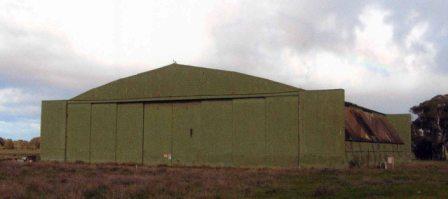

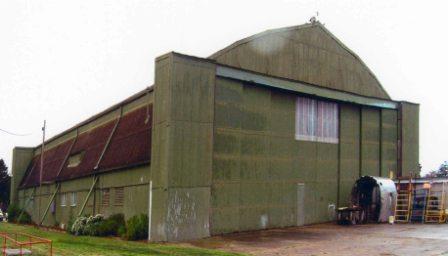
Statement of Significance
What is significant? The Werribee Satellite Aerodrome complex consists of the airfield, the surviving Hangars 1, 2, 4 and 5, and the former workshop building, built in 1942 for the Pacific War campaign. The Second World War accommodation and administration part of the complex have been demolished. The timber truss design of the hangars originated in the United States. They used steel sheer connectors to produce clear spans of 130 feet (39.6m) and 96 feet (29.3m). Hangars 1 and 2, with curtilage and workshop building, are already included in the Victorian Heritage Register. Owing to a shortage of steel the hangars were built with 'green' hardwood trusses of unusual design in that the panel points of the top chord approximate to the line of a parabola. This design was repeated elsewhere in Australia. The fifth original hangar (Hangar 3) has recently been demolished.
How is it significant? The Werribee Satellite Aerodrome is significant for architectural, historic, social, and technical reasons at a State level.
Why is it significant? The Werribee Satellite Aerodrome Hangars are of technical significance at the State level. They are structurally unique in Victoria as the only examples of a type of timber truss design originating in the United States and using steel sheer connectors to produce very large clear spans of 130 feet (39.6m) and 96 feet (29.3m), locally adapted to use unseasoned Australian hardwood. Owing to a shortage of steel the hangars were built with 'green' hardwood trusses of unusual design in that the panel points of the top chord approximate to the line of a parabola. This design was repeated elsewhere in Australia. As well as being the first long span trusses with timber tension web members, they are also the longest clear span gable shaped buildings known in Australia. No other 96 foot (29.3 metre) spans (Hangars 2, 4 and 5) are known to survive elsewhere in Australia. The combination of truss sizes enhances the significance of the complex.
The Werribee Satellite Aerodrome is of historical significance at the State level. The construction of the Hangars is expressive of the frantic Australian war-time building effort that followed the Japanese attack on Pearl Harbour; as steel was conserved for armament production, there was a flurry of experimentation and innovation in timber construction. The hangars are significant for their association with the United States Army Air Corps and the direct influence of American engineers on the Allied Works Council.
This is a rare relic of a place built specifically for, and designed with input from, the United States armed services during their historic 1942 presence in Victoria. The year 1942 presented the gravest and most critical threat in Australia's post-contact history, with the rapid fall of the Philippines, the Malay Peninsula and Singapore, attacks on Darwin and Sydney, and the Japanese invasion of New Guinea. Melbourne was established as the headquarters of General Douglas MacArthur and the Pacific War campaign. With successes in crucial naval and air battles of Midway, the Coral Sea, and the Bismarck Sea, the war and the USA forces moved northwards and MacArthur moved his headquarters to Brisbane later in 1942. The only other Victorian place that is presently known to have been purpose-built for the United States forces during this short, alarming period early in the Pacific War is the damaged Butler Hangar, formerly at Fisherman's Bend, now proposed for relocation.
The place is also of historical significance as a unique surviving Satellite Aerodrome. Many Satellite (or emergency, temporary airfields) were developed across Australia in the early phase of the Second World War, and this complex is significant as the only surviving expression of a Second World War Satellite aerodrome to remain in Victoria. The Werribee Satellite Aerodrome operated during the Second World War in conjunction with RAAF Bases at Laverton and Point Cook. As with other Satellite Aerodromes at Little River and Lara (where no structures are known to survive) it formed an important role in the Empire Air Training Scheme, with uses including bombing practice and night flying training.
The Werribee Satellite Aerodrome is of social significance at the State level. The complex is the site of the restoration of the B-24 Liberator, a nationally significant project undertaken by volunteers over many years. The place's associations with the flood of American personnel and equipment into Victoria in 1942 are unique; it was the only American air base built in Victoria, and has recently been proposed as a setting for an 'American Memorial'.
-
-
-
-
WERRIBEE SATELLITE AERODROME
 Victorian Heritage Register H1884
Victorian Heritage Register H1884 -
FORMER WERRIBEE RACECOURSE STATION
 Victorian Heritage Inventory
Victorian Heritage Inventory -
Former St Andrew's Catholic Church
 National Trust
National Trust
-
-


